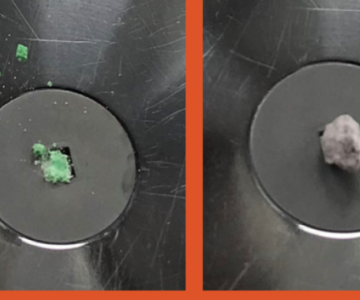Breadcrumb
- Home
- media
Explore Media
Toxic Drug Alert
Please see the attached document to learn more about the look, contamination, and risk associated with the current drug alert.
News Release
People in Kamloops and throughout the Thompson-Cariboo region are one step closer to having a new cancer centre at the Royal Inland Hospital (RIH).
"Today's announcement of the concept plan approval for the new cancer care centre demonstrates our government's commitment to deliver world-class cancer care closer to home for residents in Kamloops," said Adrian Dix, Minister of Health. "The new cancer centre will deliver access to modern, high-quality comprehensive cancer-care services for patients in their fast-growing community where it is needed."
When open, the new centre will help make the B.C. cancer-care system stronger and better equipped to deal with the demand from a growing and aging population by adding expanded cancer treatment facilities and oncology services.
"By building a new cancer centre in Kamloops, we are bringing cancer care closer to home for patients and families in the Interior," said David Byres, president and CEO, Provincial Health Services Authority. "We look forward to working in partnership with Interior Health to improve capacity for high-quality, culturally safe cancer care across this rapidly growing region and engaging with local communities, patients, families and Aboriginal partners in this process."
Concept planning, which has been completed, is a key part of the capital management and funding process that takes into account the need for investment, including identifying specific needs and how a project can support service-delivery requirements to ensure the specific needs of the community are addressed.
Business planning for the new cancer-care centre is now underway to determine the project scope, schedule and budget. The new centre is expected to provide space for:
patient arrival and check-in;
radiation treatment, including three shielded treatment rooms, known as bunkers;
three high-energy radiation treatment linear accelerators (LINACS);
radiation therapy planning;
one CT simulator;
one MRI scanner;
an outpatient oncology ambulatory care unit, including 10 exam rooms and two
consulting rooms; and
staff support, including offices and workstations.
Plans are also underway to build a 470-stall parkade to support staff, patients and visiting family and friends. Additional diagnostic and treatment equipment and services may be identified as a requirement for the new cancer-care centre during the business planning phase.
The investment in new radiation treatment services in Kamloops will prevent patients' need to travel to cancer centres elsewhere for treatment. The new centre is expected to provide radiation treatment to 1,000 patients in its opening year, which will result in 14,000 treatment visits per year.
Some cancer-care services are currently delivered in Kamloops through a community oncology clinic at RIH. It features oral and intravenous cancer treatment, chemotherapy, immunotherapy, targeted therapy and hormonal therapy. The team delivering cancer care through the community oncology clinic provide exceptional care, but the current clinic cannot meet the projected regional demands for service.
In addition to building a new cancer centre, upgrades to the community oncology clinic have also been approved.
Hospital upgrades will include the modernization and increase in the number of cancer treatment spaces and exam rooms at RIH. As well, renovation and expansion of the existing pharmacy will improve functionality, along with the installation of improved dispensing and automated dispensing replenishing area and storage.
The new cancer centre is a part of the 10-year B.C. Cancer Action Plan, which outlines actionable steps to better prevent, detect, and treat cancers, delivering improved care for people facing cancer now while preparing for the growing needs of the future.
Quotes:
Dr. Shallen Letwin, vice-president of clinical operations, Interior Health -
"People living with cancer in Kamloops and area will soon have access to comprehensive cancer care closer to home. The collaboration between Interior Health and BC Cancer to expand care options will help to improve the health outcomes and experiences of the people living in our region."
Sarah Roth, president and CEO, BC Cancer Foundation -
"The BC Cancer Foundation and its community of donors is ready and eager to partner with the provincial government and BC Cancer on bringing the very best in research, technology and care to Kamloops via this new cancer centre."
Heidi Coleman, CEO, Royal Inland Hospital Foundation -
"At the Royal Inland Hospital Foundation, we frequently encounter grateful patients who are appreciative of the care they have received, but often share stories about the hardships of having to travel to Kelowna for radiation and other cancer services. This new comprehensive cancer-care centre is a win-win for the whole province. Working together we will make the Interior of B.C. a better place to live."
Quick Facts:
Fifty per cent of all cancer patients receive radiation therapy treatment.
The community oncology clinic at RIH also provides initial consultation and treatment planning with a medical oncologist, supportive care, followup care and patient education.
Overall care is provided by an interdisciplinary team, including general practitioner oncologists, nurses, pharmacists, pharmacy technicians, social workers and dietitians.
Contacts
Ministry of Health
Communications
250 952-1887 (media line)
Interior Health
Communications
1 844 469-7077 (media line)
Provincial Health Services Authority
Communications
778 867-7472 (media line)
Read the original release from BC Gov News
Public Service Announcement
Ashcroft and area residents are advised of temporary changes to service hours at Ascroft Urgent and Primary Care Centre due to limited physician and nursing availability.
On May 20, services at the Ashcroft UPCC will be unavailable for scheduled and walk-in patients. Scheduled patients will be rebooked for the earliest available appointment date.
During this time, patients can book same-day access to care at the Kamloops Urgent Primary Care and Learning Centre at 250-314-2256.
People in the community who need life-threatening emergency care (i.e., chest pains, difficulty breathing, severe bleeding) should always call 9-1-1 for transport to the nearest available and appropriate facility.
Anyone unsure whether an emergency room visit is warranted can call HealthLink BC at 8-1-1, or visit www.HealthLinkBC.ca for non-emergency health information from nurses, dietitians and pharmacists 24 hours a day, seven days per week.
The UPCC in Ashcroft is normally open seven days a week from 8 a.m. to 8 p.m.
Public Service Announcement
Clearwater and area residents are advised of temporary changes to emergency department hours at Dr. Helmcken Memorial Hospital due to limited nursing availability.
Starting 11 p.m. tonight, May 15 to 7 a.m. Tuesday, May 16, emergency services will be unavailable and patients can access care at Royal Inland Hospital in Kamloops.
During this time, all other inpatient services will continue as normal at Dr. Helmcken Memorial Hospital.
People in the community who need life-threatening emergency care (i.e., chest pains, difficulty breathing, severe bleeding) should always call 911 for transport to the nearest available and appropriate facility.
Anyone unsure whether an emergency room visit is warranted can call HealthLink BC at 8-1-1, or visit www.HealthLinkBC.ca for non-emergency health information from nurses, dietitians and pharmacists 24 hours a day, seven days per week.
The emergency department in Clearwater is normally open 24/7.
Toxic Drug Alert
Please see the attached document to learn more about the look, contamination, and risk associated with the current drug alert.
Toxic Drug Alert
Please see the attached document to learn more about the look, contamination, and risk associated with the current drug alert.
Cranbrook Drug Alert May 4, 2023
News Release
Royal Inland Hospital (RIH) in Kamloops has completed a three-year project that will see waste anesthetic gases (WAGs) collected in all 11 of its operating rooms, significantly reducing the hospital’s carbon footprint.
Anesthetic gases used for surgeries are a known potent source of greenhouse gas emissions that contribute to climate change. Only five per cent of anesthetic gas is metabolized by the body, while the remaining 95 per cent is typically collected and vented out of the operating room and building.
“Until the anesthetic gas recovery project, our emissions reduction strategy had been focused primarily on our buildings’ systems,” said Lorne Sisley, corporate director, facilities management and operations. “But when we started looking more closely at emissions from our operations, we noted anesthetic gases have a disproportionately high greenhouse gas emissions level. This new recovery technology will be one more step toward reducing our overall carbon footprint.”
Recovering WAGs from RIH’s 11 operating rooms is the equivalent of taking 221 to 280 passenger vehicles off the road a year – IH’s total vehicle fleet emissions for all of 2021.
Interior Health partnered with cleantech company Blue-Zone Technologies of Concord, Ontario for the three-year pilot project. Up to 100 per cent of the anesthetic gas that’s exhaled by a patient is collected in canisters in the operating room in Blue-Zone’s machines.
Once the canisters are full, they’re sent to Blue-Zone’s facility where the gases are liquefied and turned into generic anesthetic gas using a patented distillation process.
“This technology offers additional economic and supply benefits for hospitals, and also protects our health-care staff, communities and environment from the impact of anesthetic gases,” said Amanda McKenzie, manager of environmental sustainability at Interior Health and project lead.
With the successful implementation of this technology at RIH, Interior Health is focusing on the other 80 operating rooms managed across the Interior region.
Sisley added, “There are other sites we will be considering to make an even greater impact, plus there is the potential to change the anesthetic gasses we currently use to lower the initial emissions profile. We will be exploring other clinical operations as well, to ensure we are considering all opportunities to green our operations.”
For more information about Interior Health’s climate action vision and commitment to environmental sustainability, please visit: https://www.interiorhealth.ca/about-ih/climate-action
Public Service Announcement
During National Immunization Awareness Week (April 24 – 30), Interior Health encourages individuals and families to stay on track with their immunizations.
“It is hard to imagine a world without vaccines,” said Dr. Fatemeh Sabet, Interior Health medical health officer. “I am so grateful for having access to a simple tool that has saved millions of lives and prevented serious consequences of so many vaccine preventable communicable diseases.”
Vaccines are available to protect against a variety of diseases such as cervical cancer, influenza, whooping cough, meningitis, chickenpox and hepatitis.
In B.C., young children are offered vaccines at two, four, six, 12, and 18 months of age. As children get older and begin school, vaccinations continue to be offered. This is to help children develop protection against vaccine preventable diseases. Some vaccinations need booster doses as children enter their teens.
Vaccines help protect us. For example, the Human Papillomavirus (HPV) vaccine is available to all children starting in grade six to protect against infection from types of HPV that cause certain cancers, such as cervical and mouth cancers. A 2019 study showed that the HPV vaccine cut the rate of early stages of cervical cancer by more than half in B.C.
The need for vaccinations does not stop after childhood years. There are many vaccines recommended for adults. All adults in B.C. can get a booster of tetanus and diphtheria vaccine every 10 years. If you missed your basic series in childhood, depending on your health, age and other risk factors, you could be eligible for certain vaccines.
“The single most important factor that helped us reduce risk of severe impacts from COVID-19 and get back to living in a safer environment has been vaccination,” said Dr. Sabet. “I am so thankful to everyone who stood up and played their part in protecting themselves and our communities by getting vaccinated.”
Visit the Immunizations & Vaccines page for information on important immunizations for infants, children, adults, the elderly as well as immunizations for pregnant women and for travel. Contact your local health unit to speak to a public health nurse if you have questions about vaccines or getting your immunizations up to date.
Toxic Drug Alert
Please see the attached document to learn more about the look, contamination, and risk associated with the current drug alert.
View more toxic drug and natural disaster alerts
-
Load More
Showing 540 of 1083




